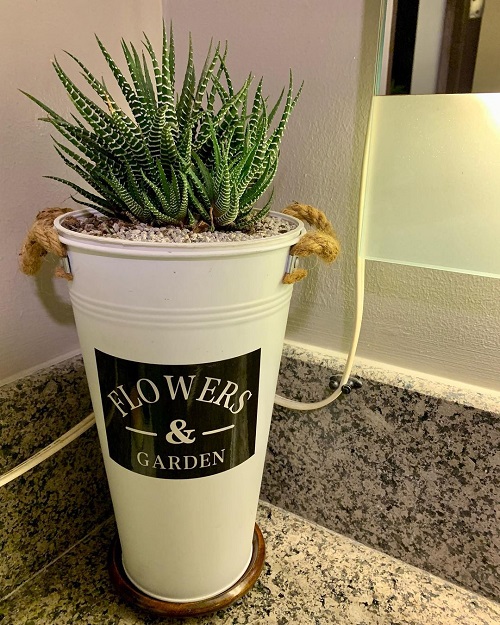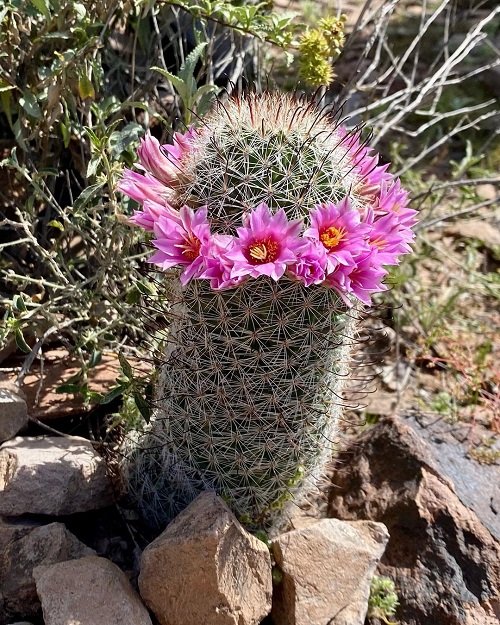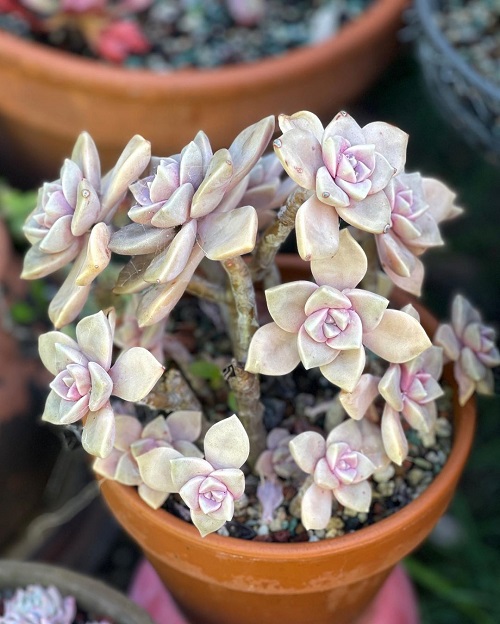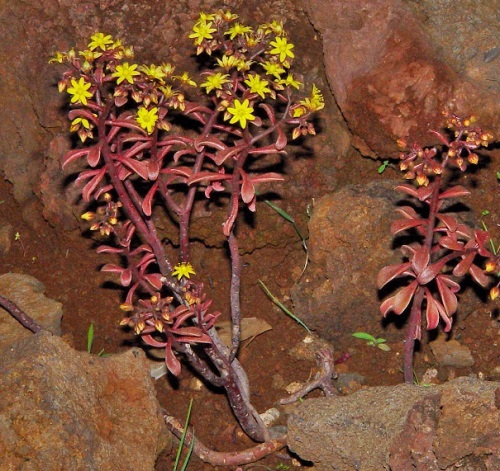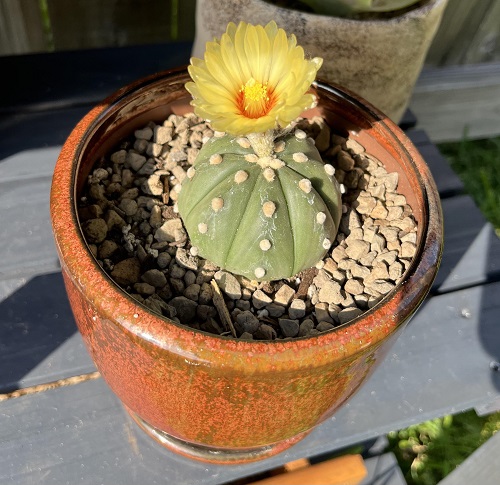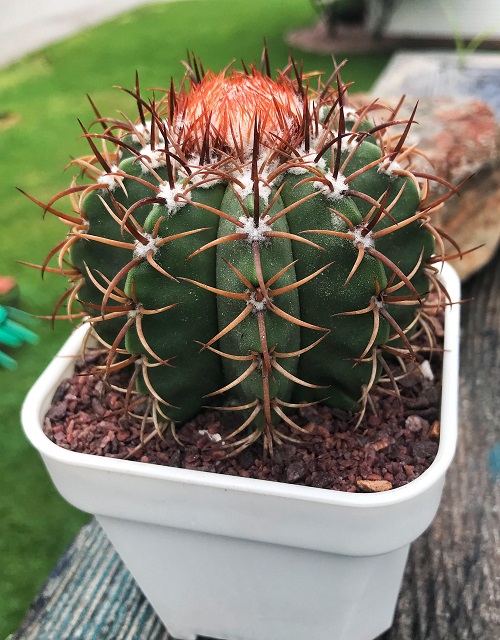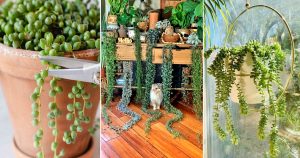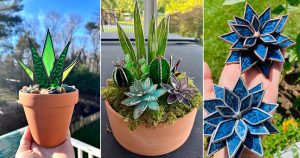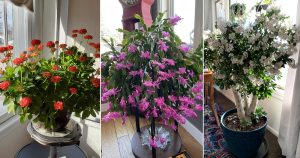From the wilderness to houseplants and gardens! Let’s go back to history and learn about some amazing wild succulents!
Wild succulents are among the rare and unique beauties of nature! They grow and flourish in wild habitats with their unique appearance, low maintenance requirements, and ability to thrive in harsh environments. There are countless varieties of succulents in the wild. We have listed the best ones for you, let’s find out!
Popular Wild Succulents
1. American Century Plant
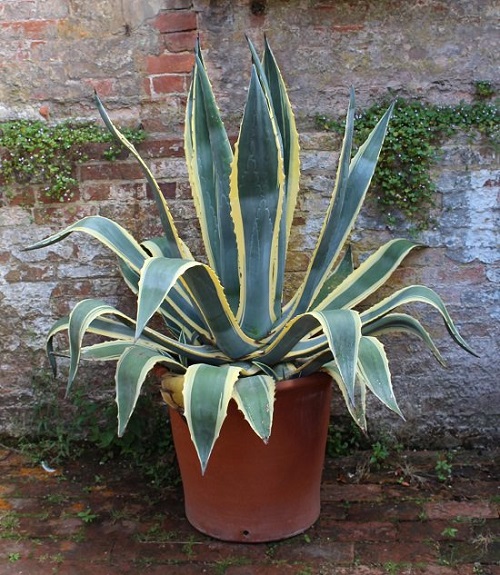
Botanical Name: Agave americana
Gracefully massive succulents, the Agave Americana are found in the wild across arid regions of America. Popular for its thick pointed leaves and dramatic flowering stalk, it thrives in harsh desert conditions. These succulents can grow quite large, up to 10 feet in height with large spiny leaves.
Additionally, like many other Agave succulents, the American Century plant also blooms at the end of its life cycle which happens after around 10-25 years depending on the climatic conditions. The flowers bloom beautifully in greenish-yellow colors (each 3-4 inches long) and later produce offsets from them.
Caution: The plant is toxic to pets and children. The sap of Agave contains toxic compounds and can cause skin irritation if exposed.
2. Zebra Cactus
Botanical Name: Haworthiopsis fasciata
If you have read our articles then you might be wondering how famous and versatile this plant is! And additionally, you can’t deny how beautiful it looks in any kind of home decor setting. It looks like Aloe and is colorful as well, the Zebra cactus is kind of a rare succulent and is seen to grow in the harsh wild conditions of South Africa.
Mostly, found buried in sand. Moreover, the name Zebra Cactus is due to the white stripes, patterns, or spots on its dark green foliage.
3. Pincushion Cactus
Botanical Name: Mammillaria species
“Pin-Cushion”, sounds familiar? Extremely popular and a graceful-looking beautiful cactus. The Pincushion cacti are small to medium-sized round or oval-shaped cacti with spikes. A distinct feature of this succulent is the areole split into two parts, at the apex and base. The spine-bearing part is the apex and the base bears flowers and fruits.
Tip: These are edible wild succulents! If you ever find yourself lost in a desert, know that the Pincushion Cactus fruits are edible and a good water source.
4. Pencil Cactus or Firesticks
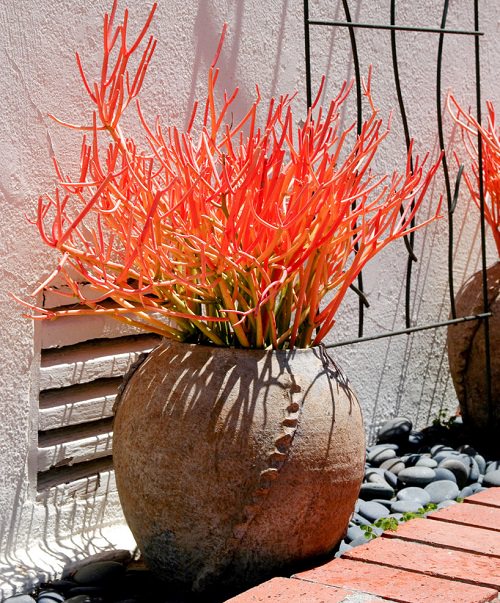
Botanical Name: Euphorbia tirucalli
Mostly considered as a houseplant nowadays, but Pencil cacti are also popular in the wild! Native to Africa, they predominantly grow in dry areas with black clay soil. Moreover, with smooth, succulent branches, this shrub can grow up to 22 feet in height and is currently considered a decorative house plant worldwide.
Additionally, you must know that the leaves change their color from green to red or orange during the winter season which is why the name Firesticks also. You can also check out our detailed care guide on this succulent!
Caution: The milky white sap of this plant can cause serious damage to the cornea if it comes in contact with your eyes, and ingestion of this can lead to irritation of lips and oral mucosa.
5. Ghost Plant
Botanical Name: Graptopetalum paraguayense
Ghost Plant is native to the rocky, arid regions of Mexico, where it grows naturally without human intervention. It is well-adapted to harsh environments, often found clinging to rocks and thriving in dry, inhospitable areas.
Its pale gray or bluish leaves, which can turn pinkish under sunlight, help it blend into its natural surroundings, making it a true wild succulent.
6. Prickly Pear Cactus

Botanical Name: Opuntia species
Did you know there are over 100 species of Prickly Pears growing in the wild of North and South America? Surprisingly, ranging from erect or spreading, small low-growing shrubs to tree-like varieties reaching 16 feet or more in height. Nowadays, many are grown as houseplants and several of them serve as a source of food too.
Accordingly, these plants have flat paddle-like stem segments called “cladodes” growing on top of each other. Moreover, they also have flowers and fruits! The flowers are yellow, pink, or orange and the fruits are fleshy, orange and taste sweet.
7. Barrel Cactus
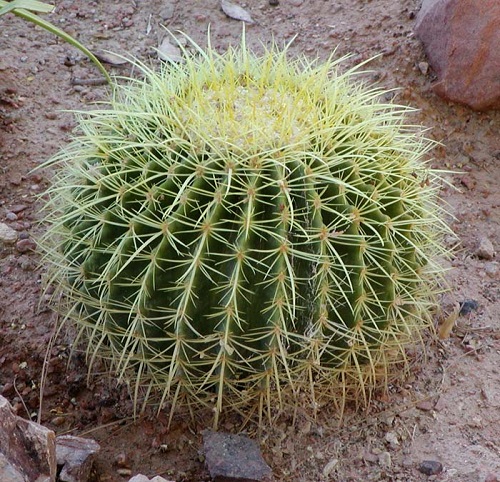
Botanical Name: Ferocactus species
A majestic cactus indigenous to the Southwestern United States and Mexico. Popular for its round, ball-like shape that keeps on elongating with age. Altogether it comprises robust spines and yellow-pink funnel-shaped flowers. They grow best in the wild, in full sun exposure, and rarely can survive in shady areas.
Additionally, it is also another edible cactus and bears fruits of yellow color and slightly resembles Pineapples! The fruits vary from dry and wooly to fleshy and round as well.
Rare Wild Succulents
8. Pelotilla de Chinamada
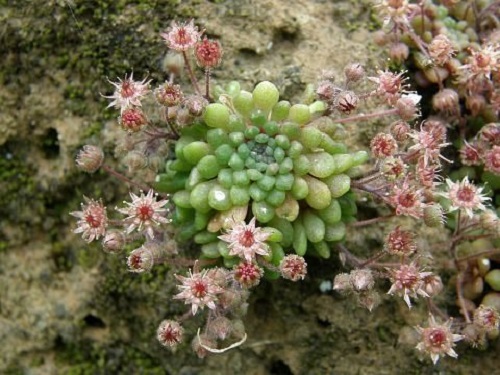
Botanical Name: Monanthes wildpretii
Enlisted in the Critically Endangered category of IUCN Conservation Status, this succulent is extremely rare to find nowadays due to the illegal collection of these plants by people. Native to the islands of Spain especially common to the Canary Islands. Accordingly, it grows low and close to the ground, and its diminutive population often goes unnoticed.
Additionally, the flowers are small, white, star-shaped with five petals and consist of black seeds. With the critical existence of this plant, it is worth mentioning that very limited research has been conducted on it.
Fact: It is used as a medicinal plant to treat fever, headache, and rheumatism.
9. Disco Cactus
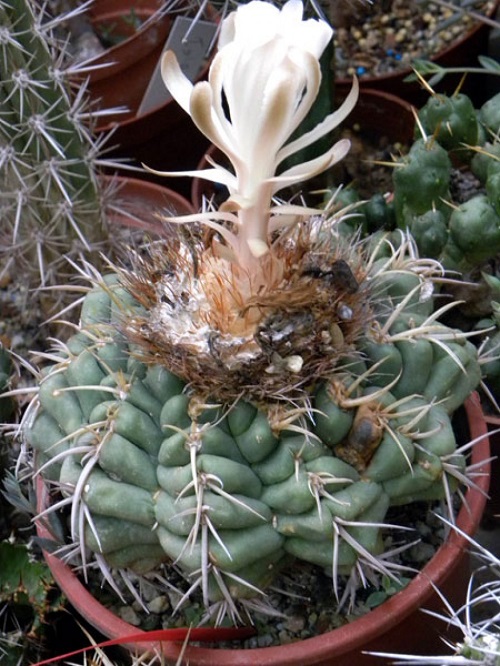
Botanical Name: Discocactus subterraneo-proliferans
Rumors are there that this wild plant is already extinct and also that very little information is available. Primarily found in southern Brazil, eastern Bolivia, and northern Paraguay, these cacti are spherical, and grow solitarily with well-defined ribs and unique wooly cephalium at the apex.
The white flowers bloom at night and produce fragrance. Additionally, it bears bright red fruits open at a vertical slit with tiny black seeds.
10. Gorgoneum or Saiao Succulent
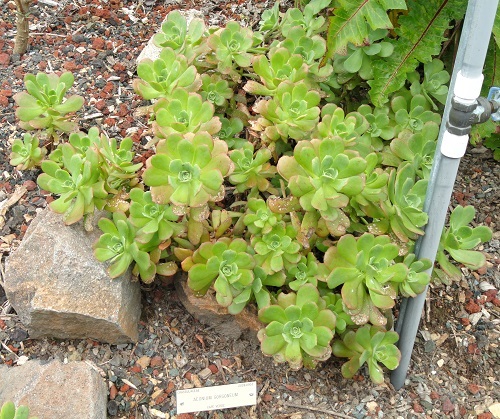
Botanical Name: Aeonium gorgoneum
A fantastic rosette of spoon-shaped leaves in clusters, too good to be an endangered species. This wild succulent is native to Cape Verde and popular as ‘Salao’ by the locals of the island. They are green with slightly red or brown edges, are perennial shrubs, and grow up to 2 meters tall.
Additionally, the most important reason to conserve this plant is due to its traditional medicine for the treatment of coughs. However, in 2014, the species’ distinct beauty was in a hard phase, but it is reportedly now stable.
11. Aichryson Succulent
Botanical Name: Aichryson dumosum
A glandular shrub-like succulent with pretty tiny yellow flowers, this wild plant is listed in the Critically Endangered category of the IUCN Red Data List updated in 2011. It is native to Madeira island of Portugal.
Accordingly, this plant can grow up to a height of only 35-38 centimeters and has reddish-purple branches. It is also reported that only 50-250 individuals of this plant are there in a 100 sq. ft. area.
12. Sand Dollar cactus
Botanical Name: Astrophytum asterias
An adorable round wild cactus, the Sand dollar cactus is native to some parts of Texas in the US and Mexico. It can grow up to a height of 3-6 cm and 5-15 cm in diameter only. The round green body is distinctly marked with segments called ribs and on the segment lies white areolas.
Additionally, the flowers bloom at the top middle portion of the plant in a yellow color resembling a beautiful Gerbera. Earlier this plant was abundant although now it is restricted to a small portion of Starr County, Texas, and a few sites in Tamaulipas. We have a nice article on several varieties of this succulent. If you would like to read about its more varieties then click here!
13. Joshua Tree
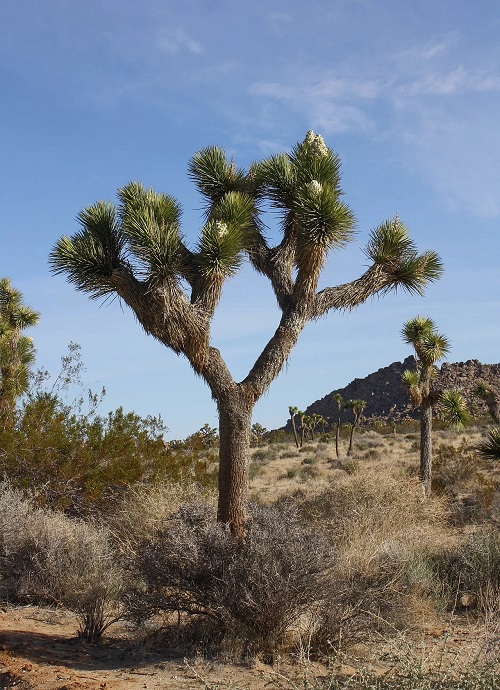
Botanical Name: Yucca brevifolia
Have you read our recent article on succulents that grow straight up? The famous Joshua Tree is a part of it! These whimsical-looking plants have escaped the lumbering and habitat losses during the 1900s. Accordingly, the biggest trees may be around 1000 years old, adapted to brutal conditions of summer above 40˚ C.
However, the rise in global warming conditions is a threat to these endangered plants. Ecologist Cameron Barrow and his team established “The Joshua Tree National Park” in 1994 which conserves thousands of these otherworldly trees.
14. Dwarf Turk’s Cap Cactus
Botanical Name: Melocactus matanzanus
A tiny round cactus with a red cap on it! That’s what it looks like actually. It is a small perennial fleshy round succulent that can reach a height of 70-90 mm and 80-90 mm in diameter only. Similar to the Sand dollar cactus this plant also has ribs on it although devoid of areoles.
The red cap-like appearance is because of the cephalium which grows after a certain age of maturity. and hence the name ” Turk’s Cap”. This plant is native to north-central Cuba.
Hope you like this fantastic wild and rare collection. Some things are beautiful yet we have to be more careful when we deal with them! If you have seen any of these succulents do share in the comments section!

